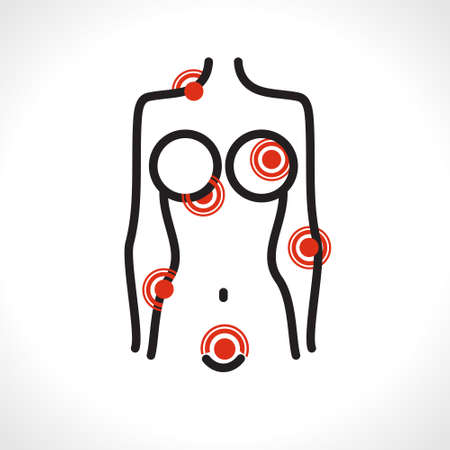Understanding Pigmentation Variations in Men
Skin pigmentation in men is a complex interplay of genetics, biology, and environment, with the UK offering a unique context due to its diverse population and variable climate. At the core of skin pigmentation lies melanin, the pigment produced by specialised cells called melanocytes. The amount, type, and distribution of melanin are largely dictated by genetic background, which explains why men from different ethnic origins across the UK exhibit a wide spectrum of skin tones. Beyond genetics, environmental factors play a crucial role: the UKs relatively low UV index compared to sunnier regions means less natural stimulation for melanin production, yet urban pollution and fluctuating weather patterns can contribute to uneven pigmentation or exacerbate existing conditions. Understanding these nuances is essential for addressing the specific skin health needs of men living in Britain, particularly as trends in skincare become more personalised and science-led.
2. Distinct Skin Health Challenges for British Men
The skin health landscape for men in the UK is influenced by a unique blend of genetic diversity, lifestyle factors, and the country’s variable climate. Unlike other regions, British men encounter pigmentation issues shaped by these localised elements, making their concerns distinct from global trends.
Skin Type Diversity Across the UK
The UK population is ethnically diverse, leading to a wide spectrum of skin types—from Fitzpatrick Type I (very fair) to Type VI (deeply pigmented). This variation means that men face different risks: lighter skin is more prone to sun-induced pigmentation and freckles, while darker complexions may experience post-inflammatory hyperpigmentation or uneven tone. Recognising these differences is crucial when addressing pigmentation concerns.
| Skin Type | Common Pigmentation Issues |
|---|---|
| Fair (Type I-II) | Freckles, sun spots, redness |
| Medium (Type III-IV) | Melasma, age spots |
| Darker (Type V-VI) | Post-inflammatory hyperpigmentation, uneven tone |
Lifestyle Factors Shaping Pigmentation Concerns
British men often balance busy urban lifestyles with outdoor leisure activities such as football or hiking. While the UK is not known for intense sunshine year-round, intermittent exposure—especially during summer months—can trigger or worsen pigmentation in unprotected skin. Additionally, high-stress work environments and irregular sleep patterns can further contribute to uneven skin tone and dullness.
The Impact of the Local Climate
The UK’s famously unpredictable weather plays a significant role in skin health. High humidity and frequent rainfall can compromise the skin barrier, leading to increased sensitivity and making it harder for men to manage existing pigmentation. Conversely, sudden sunny spells may catch individuals off guard without adequate sun protection, exacerbating photo-induced pigment changes. The challenge lies in formulating skincare routines that adapt to these shifting conditions.
Cultural Attitudes Towards Skincare
Traditionally, skincare has not been prioritised among British men; however, awareness is growing regarding the importance of tailored solutions. Overcoming stigma and encouraging regular use of products like broad-spectrum sunscreen are pivotal steps in managing pigmentation issues effectively in this demographic.

3. Common Causes of Pigmentation Issues among UK Men
When analysing pigmentation concerns specific to men in the UK, it is essential to consider the unique environmental and lifestyle factors that characterise the region. Below, we break down the primary contributors to uneven skin tone and hyperpigmentation that disproportionately affect British men.
Sun Exposure: Underestimated Risks in a Cloudy Climate
Despite the UKs reputation for overcast weather, UV exposure remains one of the leading causes of pigmentation issues among men. The misconception that cloudy days eliminate sun risk often leads to inadequate use of sunscreen or protective clothing. Over time, cumulative exposure—even on seemingly grey days—can trigger the development of sun spots, freckles, and uneven skin tone, particularly on areas most exposed, such as the face and scalp.
Shaving Irritation and Post-Inflammatory Hyperpigmentation
Frequent shaving is another common practice among British men that can inadvertently lead to pigmentation problems. Repeated razor use can cause micro-injuries or irritation, especially if shaving habits are rushed or products are not suited for sensitive skin. This irritation may result in post-inflammatory hyperpigmentation (PIH), where dark patches form as a response to repeated trauma or inflammation of hair follicles.
Lifestyle Habits: Urban Living and Pollution
The urban lifestyle prevalent across UK cities introduces additional stressors for mens skin health. Airborne pollutants from traffic and industrial activity can accelerate oxidative stress and trigger inflammatory responses in the skin, further exacerbating pigmentation irregularities. Coupled with late nights, alcohol consumption, and diets high in processed foods—habits commonly observed in metropolitan areas—these factors create a perfect storm for persistent pigmentation challenges.
Genetic Predisposition and Skin Type Variations
It is also important to acknowledge genetic predispositions within the UK’s diverse population. Men with darker skin tones are naturally more prone to hyperpigmentation following even minor skin trauma or inflammation. Conversely, those with fairer complexions may be at heightened risk of developing sun-induced pigmentation due to lower levels of melanin protection.
The Importance of Awareness and Preventative Action
Addressing these common causes requires a tailored approach that recognises both behavioural patterns and environmental realities unique to life in the UK. Raising awareness about daily sun protection, proper shaving techniques, and mitigating urban lifestyle impacts is critical for preventing future pigmentation issues amongst British men.
4. Cultural Attitudes and Awareness of Men’s Skin Health
In the UK, the conversation around men’s skin health, particularly pigmentation concerns, has historically been overshadowed by longstanding cultural attitudes. Traditionally, skincare routines and products were marketed towards women, leaving men with limited options and a lack of targeted education. This landscape is gradually changing as awareness grows, but stigma and misconceptions still persist.
Current Level of Awareness
Recent surveys indicate that British men are increasingly acknowledging the importance of skincare, yet overall awareness about pigmentation issues remains moderate. While more men recognise the impact of factors such as sun exposure and pollution on their skin, knowledge about specific conditions like hyperpigmentation or melasma is often lacking. Workplace discussions and mainstream media coverage are slowly improving visibility, but gaps in understanding continue to exist.
Stigma Surrounding Men’s Skincare
Cultural perceptions have long associated skincare with femininity, leading many men to feel uncomfortable seeking advice or using specialised products. This stigma is especially pronounced when it comes to visible skin conditions such as pigmentation, which can be perceived as a cosmetic rather than a health concern. The reluctance to discuss these issues openly has impeded progress in addressing unique male needs in dermatology.
Societal Shifts and Evolving Perspectives
The last decade has seen notable shifts in societal views towards men’s self-care routines in the UK. Celebrity endorsements, social media influencers, and dedicated men’s grooming brands have contributed to normalising conversations around male skincare. Younger generations are particularly receptive to these changes, challenging outdated notions and advocating for inclusivity in the beauty industry.
Comparison Table: Generational Attitudes Towards Men’s Skin Health in the UK
| Generation | Awareness Level | Stigma Presence | Openness to Discuss Pigmentation |
|---|---|---|---|
| Baby Boomers | Low | High | Reluctant |
| Generation X | Moderate | Medium | Cautious |
| Millennials | High | Low | Open |
| Generation Z | Very High | Minimal | Very Open |
This evolution underscores an increasing demand for educational initiatives, tailored skincare solutions, and public campaigns that challenge stereotypes while promoting comprehensive skin health for men across the UK. As cultural attitudes continue to evolve, the stigma surrounding men’s pigmentation concerns is expected to diminish further, paving the way for greater acceptance and proactive care.
5. Effective Treatments and Preventative Strategies
Overview of Evidence-Based Approaches
Addressing pigmentation in men requires a strategic combination of proven therapies and preventative measures. In the UK, a variety of evidence-based solutions are accessible, catering to diverse skin types and pigmentation concerns prevalent among British men. These range from easily available over-the-counter options to advanced clinical procedures, each with varying levels of efficacy depending on individual needs and underlying causes.
Over-the-Counter Products
The UK market offers an array of topical agents targeting hyperpigmentation. Key ingredients such as niacinamide, vitamin C, azelaic acid, and retinoids are widely endorsed by dermatologists for their ability to inhibit melanin production and promote skin renewal. Men are increasingly opting for formulations designed for male skin, with lightweight textures that address oiliness without compromising efficacy. Sunscreen remains a cornerstone of prevention—broad-spectrum SPF 30 or higher is recommended daily, even during overcast British weather, to prevent both new pigmentation and worsening of existing marks.
Clinical Treatments Available in the UK
For more persistent or severe pigmentation, professional interventions deliver targeted results. Chemical peels using glycolic or salicylic acid are routinely performed in UK clinics to exfoliate the upper skin layers and diminish dark patches. Laser therapies—such as Q-switched Nd:YAG lasers—are effective against deeper pigmentation but require assessment by qualified practitioners to minimise risks in darker skin tones. Microdermabrasion and microneedling have also gained traction as adjunct treatments, stimulating collagen production and improving overall skin texture.
Prescription Solutions
When over-the-counter products prove insufficient, prescription creams containing hydroquinone (restricted in the UK), tretinoin, or corticosteroids may be considered under medical supervision. Dermatologists tailor regimens based on individual risk factors, ensuring both safety and optimal outcomes while adhering to UK regulatory standards.
Routine Preventative Measures
Consistency is crucial in managing pigmentation. Regular use of sun protection, diligent skincare routines incorporating antioxidants, and avoidance of triggers such as harsh shaving techniques all contribute to long-term improvement. For men engaged in outdoor activities typical across the UK—such as football or cycling—protective clothing and reapplication of sunscreen are especially pertinent.
Looking Forward: Personalised Care
The future of pigmentation management for men in Britain lies in personalised solutions that account for genetic background, lifestyle factors, and evolving technologies. Routine consultations with skincare professionals can ensure that emerging treatments are safely incorporated into daily life, helping men achieve clearer, healthier complexions regardless of age or ethnicity.
6. Future Trends in Men’s Pigmentation Care
The landscape of mens pigmentation care in the UK is rapidly evolving, with a clear trajectory towards greater inclusivity, innovation, and personalisation. As awareness of pigmentation issues among men increases, so does the demand for solutions tailored specifically to male skin biology and lifestyle factors. Emerging trends highlight a shift from generic skincare products to advanced formulations that address the unique requirements of men living in the UKs diverse climate and urban environments.
Innovative Ingredients and Technologies
Cutting-edge research has led to the introduction of novel ingredients such as niacinamide, tranexamic acid, and encapsulated vitamin C, all designed to effectively target hyperpigmentation while being gentle on men’s skin. Additionally, brands are integrating smart technology—such as AI-powered skin assessments and app-based progress tracking—to offer bespoke recommendations, ensuring more precise management of pigmentation concerns.
Focus on Diversity and Inclusivity
The UK’s multicultural society is driving a broader spectrum of pigmentation solutions. Brands are increasingly formulating products suitable for all skin tones and types, addressing the specific needs of men with darker or mixed heritage complexions who may be more susceptible to conditions like post-inflammatory hyperpigmentation. This shift reflects a broader industry commitment to representation and efficacy across the full range of British male consumers.
Sustainability and Ethical Skincare
Consumers are becoming more conscious of sustainability in their grooming choices. The future of men’s pigmentation care will likely see an increase in eco-friendly packaging, cruelty-free testing methods, and the use of ethically sourced botanicals—all without compromising product performance. UK-based brands are leading by example, aligning their innovations with both environmental responsibility and high standards for clinical effectiveness.
The Rise of Preventative Care
Another emerging trend is preventative skincare—encouraging men to adopt daily routines that protect against pigmentation triggers such as UV exposure and pollution. Education campaigns across the UK are demystifying sun protection for men, emphasising its role not just in anti-ageing but in preventing uneven skin tone and long-term pigmentary disorders.
In summary, the future of men’s pigmentation care in the UK is defined by a holistic approach—one that combines scientific advancement, personalised regimens, cultural inclusivity, and ethical practices. As this sector continues to grow, British men are empowered with more targeted options than ever before to achieve healthy, even-toned skin suited to their individual needs.

